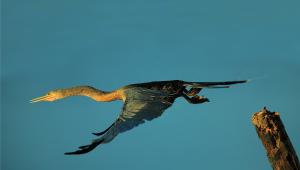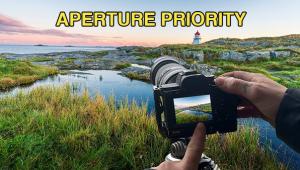Help!
| PLEASE READ THIS
BEFORE WRITING TO HELP! Re: A question
by Gary Hill about German lens makers in last month's issue, pg.
278. Most of these great old German lens makers have fallen victim to
competition from the Far East and gone out of business. This was the
fate of Heinz Kilfitt, Steinheil, and Schacht. Hugo Meyer was reorganized
after German reunification (they were in the former East Germany) into
Meyer Optik, but have dropped out of the camera lens business due to
competition and now produce industrial optics. Re: De Vere
distribution in the US. It has come to our attention that TruTrak Imaging
Equipment recently moved. Contact them at PO Box 790, Hurlock, MD 21643;
(410) 943-1100; fax: (410) 943-1200. Q. I have hit the
proverbial stone wall and need your assistance. I am greatly interested
in nighttime starlight photography. I wish to explore the use of fast
ISO film speeds, ambient lighting without any manner of artificial lighting,
coupled with minimal use of infrared film and that source of lighting.
I am a serious amateur and full-time journalist/photojournalist student
at Eastern Wash- A.
Since this is far out of my expertise area, I asked a friend, Alan Mitterling
for some tips, since he has an observatory and does this type of photography
as a serious hobby. In a printout entitled "Tips for Better Astrophotos"
I excerpted the following advice. Objects need to be as high up as possible
to reduce atmospheric distortion. Photograph only on clear nights. Buy
film that has been sensitized or find someone who can sensitize it for
you since this will give you a 4 to 15 fold in long duration increase
in film speed needed for long duration exposures. He uses Kodak T-Max
pushed to ISO 1600 and Kodak Ektachrome 800-1600P pushed to 800 or 1600.
Use as fast a lens as possible to reduce the necessity of guiding the
telescope. For instance, an object that takes 5 minutes exposure with
a f/2 lens will take 80 minutes with a f/8 lens with the same film speed.
Keep a logbook of your various objects, equipment used, results, etc.
For further guidance, Mitterling suggested the following web sites:
Q. I have several
large prints that have been mounted in glass frames for the past few
years. However, for some reason or the other, most of the prints have
become fused in spots to the glass, and I can't seem to be able
to separate them from the glass without the emulsion tearing in the
process. I would greatly appreciate your checking to see if there is
a solution available that would help me resolve my problem. A.
I posed your question to two local framing shops but they did not have
any definitive answer or suggestions. The consensus of opinion was to
soak the glass with the stuck photo in cold water for an hour or so,
then gently try to lift or peel it off. If you have some common photographic
wetting agent (normally used to rinse film in after processing to assist
in the removal of water without leaving spots) this would help soften
the emulsion and make it more pliable. Of course you would then have
to dry the photo afterward before remounting it. If the paper is of
recent vintage it probably is an RC (Resin Coated) material which air
dries without curling when hung from a clothes pin or something in a
dust free area. You don't say if the photos are black and white
or color or approximately how old they are which might have helped some
in trying to diagnose your problem. Q. I would appreciate
very much if you could help me with some information on the following
camera, the Graflex - Graphic 35 with a Prontor-SVS f/2.8 50mm lens.
What company made it? When? Where? The camera needs repairs. Is there
anyplace we could send it or could we get parts for it or is it worth
repairing? A.
Graflex, Inc. of Rochester, New York, made the camera in 1955. They
are probably best known for their broad line of large format press cameras
and the R B Graflex 4x5 SLR with different models made from the turn
of the century until the 1970s. They also offered a few models of 35mm
rangefinders, 120 TLR cameras, and stereo cameras. Yours is one of several
rather unusual 35mm cameras they made. One of my camera collector reference
books lists your camera under the heading "Unusual, Impractical
and Very Collectable." The reason they put it in this category
is due to the unusual two finger, push-button, focusing system that
requires placing a finger from each hand on each of two buttons that
protruded from the front for a push-in focusing action. In addition,
the shutter release is on the front right side of the body just below
the focusing button where it can be tripped using the middle finger
without moving the index finger from the focusing button. So it was
fast operating. Although the camera was made in America, the lens and
shutter were imported from Germany. Several of my books show it with
an f/3.5 lens, not the f/2.8 you have. I seriously doubt if it would
be worth repairing even if you could locate somebody with the needed
parts. A later Graphic Jet model has similar focusing, a built-in meter,
and was powered by a CO2 cartridge which would operate the camera for
six to eight rolls of film. Although seldom found in an operative condition
today, this model still commands a better price because it was more
unique. Your camera is just an interesting model from a now defunct
but well-known photographic firm. Q. I collect and
use subminiatures and have some 16mm cameras that I particularly like
to use. But I have lost my contacts to buy film and processing. Can
you tell me who still sells film for Minolta 16mm, also who offers processing
services? A.
Since Minolta stopped handling 16mm film a few years ago, we have had
a number of inquiries on the subject. A friend at Minolta recommended
accessing this web site at: http://members.aol.com/xkaes/index.htm When
I opened this site on the Internet I found they have a number of categories
such as: The Newsstand; The Library; The Camera Shop (which includes
a film counter listing where to buy 16mm film); and The Darkroom. If
you cannot access the web yourself, check with your local library. They
often have a few computers with Internet access available in hour-long
blocks of time so you can access this site and gain firsthand information
from people currently using this film format. Hope this assists both
of you in your 16mm quest. Q. I have tried blue
books and cannot find information on a camera. It is a 1950s style with
name of Petina having a selenium meter and Carl Zeiss Tessar 50mm f/2.8
lens. The camera seems operational, except for the meter. Any help will
be appreciated. A.
I searched through the alphabetical index of six of my better used camera
guides and found no listing for the Petina brand anywhere. With the
50mm Carl Zeiss Tessar lens it must be a 35mm camera, and probably is
German in origin, but that's about all I can guess. I know I have
never heard of this product name myself. If any of our broad readership
knows anything about this obscure brand name, I'm sure they will
get in contact with you. For this purpose, we will publish your full
mailing address so they can contact you directly. Sorry I could not
be of more direct assistance. Q. I have a Miranda
Cadius II incident light meter and a 21/4 TLR camera Super Richoflex.
Both were bought many years ago. I'm searching for an instruction
manual for both. They are in excellent condition. Here in my northern
area of the province of Quebec, Canada, there is no real possibility
to find out easily about old materials such as the ones I'm writing
for. Thanks. A.
In this country, there are two primary sources for original and/or copies
of old camera and related product instruction books. One is: John S.
Craig, Box 1637, Torrington, CT 06790; (860) 496-9791. The other one
is: Finger Lakes Photo Books, PO Box 1002, Elbridge, NY 13060; (315)
251-3661. This latter firm can be also accessed on the Internet at:
www. photomall.com/flpbks.htm Hopefully one or the other will have the
instruction books you seek. Q. Do you know of
any sources for repair parts for Nikor paper trimmers? I need replacement
cutting wheel assemblies. I'd really like to be able to buy another
Nikor trimmer if I could find one. A.
I don't know of any source for Nikor trimmer parts. Several firms
do offer their versions of rotary trimmers and possibly some of the
parts might be compatible with your Nikor model. The firms are: The
Tiffen Co., 21 Jet View Dr., Rochester, NY 14624; (800) 394-3686, (716)
328-7800; fax: (716) 328-4186; www.tiffen.com and Doran Enterprises,
2779 S 34th St., Mil- Q. I own an older
Minolta SLR. I'm trying to locate a source for camera cases, as
mine is worn out. Naturally, I contacted the manufacturer and they politely
informed me that they are no longer available through them. They suggested
that I try your magazine. I have accessed classified ads through your
web site without any success. Do you have any suggestions? The model
in question is the SR-T 201. Thanks for any help that you can offer.
A. Very
few SLRs come with flip-open eveready cases today so it is difficult
to find one for current models let alone one for your Minolta SR-T 201
from the 1980s. So, I doubt if you will be able to find a hard leather
case that will fit your SLR. It seems that most photographers now use
gadget bags for carrying a camera plus a few other accessories. However,
there are several firms that offer soft neoprene SLR camera cases that
fit a multitude of different SLR camera bodies. This type of universal
soft case covers just the camera with a normal or short zoom lens and
offers protection when the camera is carried by the neckstrap. Two of
the firms that offer these soft cases are Op/Tech USA (800) 251-7815
and Zing Designs (now available through The Tiffen Co. (800) 394-3686).
I don't believe either of these firms will sell direct, but if
you contact them, they should be able to give you the names of dealers
in your area that stock their products. Q. Can you recommend
a low-contrast, daylight-balanced film suitable for copying slides?
I will be copying a large number of slides using an old Honeywell Repronar.
The Repronar utilizes a xenon flash and the only copy films I can find
are tungsten-balanced. I'm not sure if the flash output is high
enough for tungsten-to-daylight filtration. Thank you for your time. A. Better
(that is, large, stock house) dealers often stock Kodak Ektachrome slide
duplicating film. It is normally offered in 100' bulk rolls for
loading into cassettes yourself, but some dealers also carry the film
in 36 exposure cassettes. There are two versions of this duplicating
film, Type K (for Kodachrome slides) and Type E (for Ektachrome slides).
Although this film is balanced for tungsten light sources it can be
filtered over for use with daylight electronic flash lighting such as
found in your Repronar. You then use the required gelatin 2B filter
plus CC15M + CC55Y color correction filters. You will have to run exposure
tests on a trial roll to determine the "ballpark" exposure
to use, so purchase a few rolls. There is Fujichrome Duplicating film
CDU, but I don't presently have sample rolls of it to refer to
the data sheet. One or the other of these two brands of film should
be just what you need. Be sure to order the filters along with the film,
as they too are not readily available at local camera stores. |
- Log in or register to post comments

































